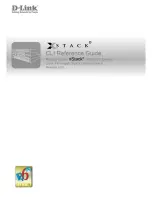
TSW200E1
during the test in progress. This alarm is effective only for the asynchronous mode and
for the G703-64k interface synchronous mode.
•
DROPOUT: indicates the total number of carrier losses during the test in progress. This
alarm is effective only for the asynchronous mode and for the synchronous mode only
when the interface is G703-64k.
•
SIGNAL LOSS (for G.703-2M interface only): indicates the total number of occurrences
of missing signal for the 2Mbps stream during test execution.
•
NO CLOCK: Indicates the number of seconds during which the equipment has detected
the absence of the clock signal at its reception.
•
NO SYNC: Indicates the number of seconds during which the equipment has lost sync.
•
SYNC LOSS: Indicates the number of times that the equipment lost sync respectively to
the receive signal.
•
PAT LOSS: indicates the pattern sync losses. This means the expected sequence is not
being received.
•
ALL ONES: Keeps track of the seconds during which the receive signal is always 1.
•
ALL ZEROS: Keeps track of the seconds during which the receive signal is always 0.
4.4.4 - Histograms
Histograms are graphical representations of the quantity of errors or alarms versus time. For
each error or alarm that can occur in a test situation, a histogram is displayed. Each histogram
column displays the quantity of errors or alarms that occurred during that minute, or during that
hour, according to the chosen resolution.
The histogram screens are accessible during the test, or by memory visualisation. The
histograms are accessible from the Menu screen, by positioning the cursor at the appropriate line
and then pressing <F3> (ENTER). The first histogram displayed is always the errored bits
histogram (shown below).
F1 F2 F3 F4
BACK MENU NEXT
10E4
10E2
0
000 128
H ISTO BIT ER R O R
Min: 0009 Errors: 2000
There is a small cursor just below the graph that points to a column. In the upper part of the
display, just below the title, there is the minute or hour that corresponds to the column where the
cursor is. There is also the number of errors or alarms (according to the plotted graph) that occurred
on that particular minute. To move the cursor through the graph, a column at a time, use the → and
Wise Telecommunications Industry
32
Summary of Contents for TSW200E1
Page 1: ...Operation Manual TSW200E1 Version 1 Revision 7 November 2010 ...
Page 2: ......
Page 4: ......
Page 8: ......
















































